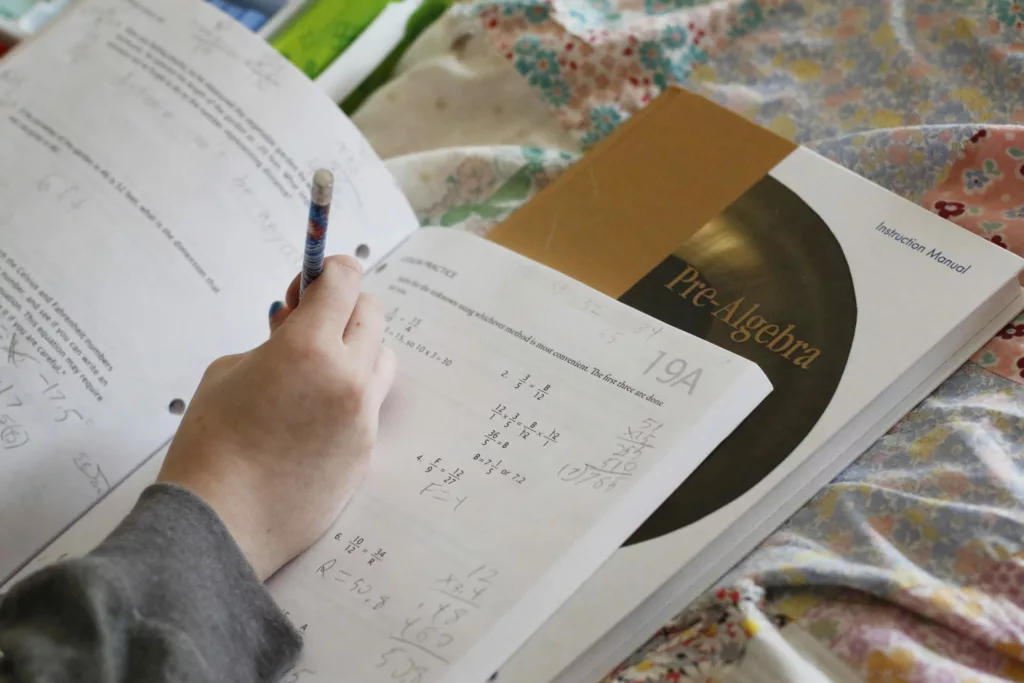[ad_1]
Get important education news and analysis delivered straight to your inbox
Before the pandemic, middle school students’ test scores in math tended to decline as they moved through each grade. But the depth of this problem was obscured as most states, and thus most newspapers, reported achievement trends by comparing each new year’s eighth graders to the previous year’s eighth graders.
The disruptions caused by the pandemic took this hidden problem and exacerbated it. Our nonprofit found that as many as one million students whose problem-solving skills in math once met grade-level standards are now off track. The average eighth grader is now three years below grade level in math.
The rhetoric and policy of “accelerate, don’t remediate” makes sense when students are a year to a year and a half below grade level. But even the best guides on how to help students complete unfinished learning don’t have advice on how to help math students who are three years behind.
Middle school math teachers need something more tailored to them.
In the best of circumstances, middle school math is uniquely difficult. These are the years when students must master fractions and division and decimals; the degree to which they do so predicts their math achievement for the rest of their education.
If elementary and middle school students don’t learn these subjects well, the steady ramp up from arithmetic to algebra becomes a ninety-degree wall, according to Hung-Hsi Wu, emeritus professor of mathematics at the University of California, Berkeley. Poor knowledge of fractions may lead students to give up trying to make sense of math altogether.
Related: Inside the new middle school math crisis
If “accelerate, don’t remediate” doesn’t help, what will?
First, let’s take a closer look at middle school learning loss.
According to our analysis, in Arkansas and South Dakota, students’ English language arts test scores rose 1 to 2 percent over the course of the pandemic, but their math achievement scores fell by 20 and 15 percent. ELA achievement remained steady for middle school students in California, Georgia and Hawaii, but math scores fell by an average of 18 percent. In the half of the nation where data is publicly available for the last five years, we found that the average drop in middle school math proficiency was four times greater than the drop in ELA scores.
Middle school math is uniquely difficult.
California, Connecticut and Vermont release test “scale scores” that follow the achievement of all students over time as they move through school. This view of learning loss differs from what’s seen in reports from McKinsey and Harvard University because those reports simply take snapshots of the number of students at or near proficiency in certain years. The states’ scale scores showed that while the typical student had been on grade level by the end of third grade in 2017, they finished eighth grade in spring 2022 at the fifth-grade standard.
Related: Is it time to stop segregating kids by ability in middle school math?
That suggests that even though many of the students are now taking Algebra 1 in high school, they are struggling to divide fractions.
That’s the extent of the problem. Here are solutions for district and state leaders to consider:
First, money. One promising approach for states and districts is to offer vouchers directly to parents so they can directly negotiate the best arrangements for high-dosage tutoring. Indiana Learns provides qualifying families with scholarships up to $1,000. This innovative approach helps solves one of the big implementation challenges schools face — lining up tutors — by allowing parents to choose among math tutors and instruction times.
Second, school leaders need to take incremental steps toward providing “mastery learning,” in which learning expectations remain fixed but the time to meet them is flexible. Students who need more time get it. Michael Horn’s new book, “From Reopen to Reinvent,” and the Aurora Institute offer advice on how schools might thoughtfully do this.
Third, middle school math students need to spend more time on math overall and, where possible, take double-dose courses in math. Over a year, double-dose math has been shown to produce gains equivalent to one and a quarter years of learning. Those gains can fade over time, so students may need extra time all through high school.
We need school leaders and teachers and university professors to push us toward developing and implementing these solutions.
David Scarlett Wakelyn is a former math teacher who helped develop the Common Core State Standards while at the National Governors Association. He is a partner at Union Square Learning.
This story about middle school math was produced by The Hechinger Report, a nonprofit, independent news organization focused on inequality and innovation in education. Sign up for Hechinger’s newsletter.
Want to write your own Op-Ed?
We consider all submissions under 900 words.
[ad_2]
Source link
Meet Our Successful Graduates: Learn how our courses have propelled graduates into rewarding
careers. Explore their success stories here!
Discover More About Your Future: Interested in advancing your teaching career? Explore our
IPGCE, MA, and QTS courses today!

Explore Our Courses: Ready to take the next
step in your education journey? View our
comprehensive course offerings now!

